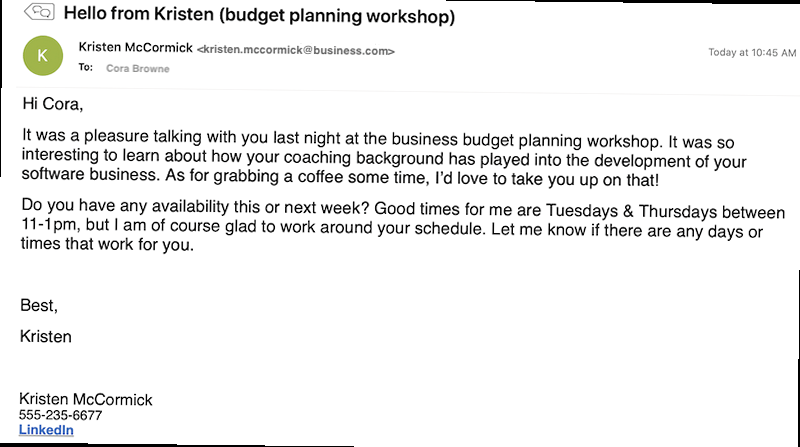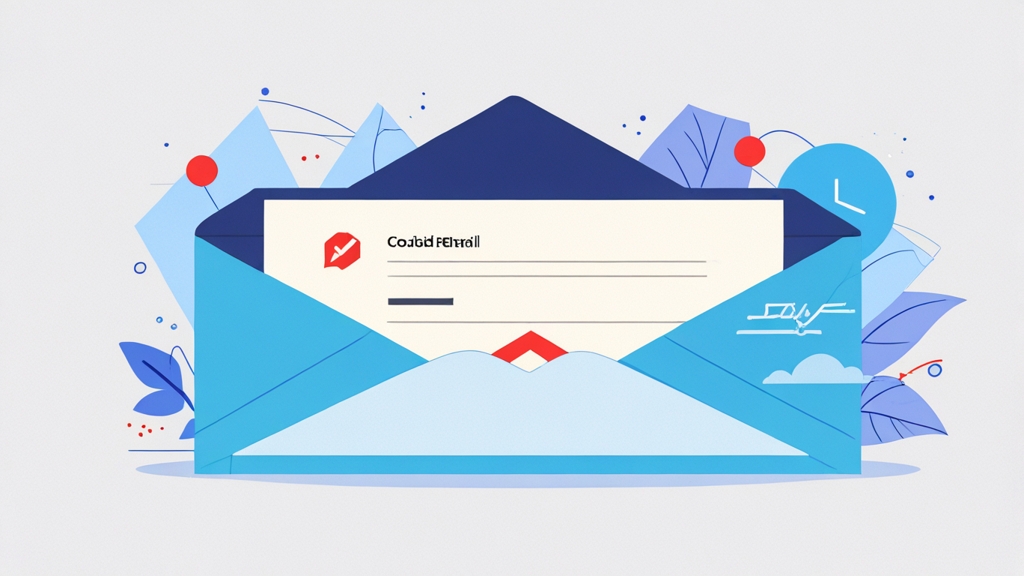Best Cold Email Subject Lines for Networking
Networking through cold emails can be daunting, but a compelling subject line is your key to getting noticed. A well-crafted subject line can be the difference between your email being opened and read, or immediately deleted. This article will provide actionable strategies and examples of high-performing subject lines specifically tailored for networking, helping you connect with industry leaders, potential mentors, and valuable contacts.
The Power of Personalization in Subject Lines
[IMAGE_SECTION: A close-up shot of a computer screen showing a personalized cold email subject line. The screen is brightly lit and the focus is on the subject line itself. ]Personalization goes beyond simply inserting a name. It’s about demonstrating that you’ve done your research and understand the recipient’s interests, accomplishments, or current projects. Generic subject lines scream “mass email” and are easily ignored. Personalized subject lines, on the other hand, show genuine interest and increase the likelihood of engagement.
The goal is to create a subject line that feels like it was written specifically for the recipient, sparking their curiosity and prompting them to open your email.
Examples of Personalized Subject Lines
- “Loved your talk on [Specific Topic] at [Conference Name]” – This shows you’ve invested time in understanding their expertise.
- “Saw your work on [Project/Company] – Impressive!” – A direct compliment related to their professional achievements.
- “Fellow [University/Organization] Alumni Seeking Advice” – Leverage shared connections for a warmer introduction.
- “[Mutual Connection]’s suggestion to connect” – Using a referral significantly boosts open rates.
Example Breakdown: “Loved your talk on AI Ethics at the Tech Summit”
This subject line immediately grabs attention because:
- It’s specific: Mentioning “AI Ethics” and “Tech Summit” shows you weren’t just generally impressed.
- It demonstrates effort: You took the time to attend their talk and remember the key topic.
- It’s a compliment: People appreciate recognition of their expertise.
Without personalization, this might have been a generic and less effective, “Networking Opportunity.”
Finding Personalization Opportunities
Where can you find the information needed to personalize your subject lines? Here are some key resources:
- LinkedIn: Check their profile for current roles, past experiences, articles they’ve shared, and groups they belong to.
- Company Website: Look for their bio, recent blog posts, or press releases that mention them.
- Industry Publications: Search for articles they’ve written or been interviewed in.
- Conference Websites: If they’re a speaker, find information about their topic and presentation.
- Mutual Connections: Ask for insights or anecdotes about the person you’re trying to connect with.
Remember, the more specific and relevant your personalization, the more effective your subject line will be. Avoid generic compliments or obvious attempts at flattery. Focus on genuine points of connection.
For instance, instead of “Great Profile!”, try “Impressed by your work on [Specific Project] at [Company].” The latter shows you’ve actually examined their profile and understand their contributions.
“People ignore design that ignores people.”
Frank Chimero
This quote applies to cold emailing as well. If your subject line ignores the recipient’s specific interests and achievements, it will likely be ignored.
Expert Tip: Use a spreadsheet to track your personalization research. Record key details about each person you’re contacting, such as their recent projects, speaking engagements, or shared connections. This will help you quickly craft personalized subject lines and avoid repeating information.
The Art of Curiosity and Intrigue

While personalization establishes relevance, curiosity piques interest. A well-crafted curiosity-driven subject line creates a sense of anticipation, making the recipient want to know more. It should hint at the value you’re offering without giving everything away.
However, there’s a fine line between intriguing and misleading. Avoid clickbait tactics or sensational claims that don’t deliver on their promise. Your subject line should accurately reflect the content of your email and build trust, not erode it.
Examples of Curiosity-Driven Subject Lines
- “A Quick Question About [Industry Trend]” – Positions you as someone seeking their expertise.
- “Idea to Improve [Company Name]’s [Specific Area]” – Offers potential value related to their business.
- “Intrigued by your perspective on [Recent Event]” – Shows interest in their unique viewpoint.
- “Potential Collaboration Opportunity for [Shared Interest]” – Hints at a mutually beneficial partnership.
Example Breakdown: “A Quick Question About the Future of Blockchain in Healthcare”
This subject line creates curiosity because:
- It’s specific enough to be relevant: Targeting a specific industry (healthcare) and technology (blockchain).
- It’s open-ended: The phrase “A Quick Question” implies a low-commitment request.
- It suggests expertise: You’re seeking their opinion on a complex topic.
A generic alternative, such as “Networking Request,” lacks this element of curiosity and is less likely to be opened.
Balancing Curiosity and Clarity
The key is to find a balance between generating curiosity and being clear about the purpose of your email. Avoid vague or overly cryptic subject lines that leave the recipient guessing.
For example, “Just Saw Your Post” is too vague. Instead, try “Intrigued by your post on [Specific Topic] – a thought on [Related Idea].” The latter provides more context and makes your email more relevant.
Consider these contrasting examples:
| Vague (Less Effective) | Curious and Clear (More Effective) |
|---|---|
| “Checking In” | “Following up on [Previous Conversation/Event] – Next Steps?” |
| “Interesting Idea” | “Idea to Improve [Company Name]’s Customer Onboarding Process” |
| “Question” | “A Quick Question About Your Experience with [Specific Technology]” |
The “Curious and Clear” examples provide enough information to pique interest without being misleading or overly generic. They also clearly indicate the topic of the email, making it easier for the recipient to prioritize.
Expert Tip: A/B test different subject lines to see which ones generate the highest open rates. Experiment with different levels of curiosity and clarity to find the optimal balance for your target audience. Use email marketing tools to track your results and refine your approach.
Leveraging Urgency and Scarcity (Use Sparingly)
Urgency and scarcity can be powerful motivators, but they should be used sparingly and ethically in networking emails. Overusing these tactics can make you appear pushy or manipulative, damaging your credibility.
The key is to create a genuine sense of urgency that aligns with the context of your request. For example, if you’re applying for a limited-time mentorship program or seeking feedback on a project with a deadline, it’s appropriate to highlight the time-sensitive nature of your email.
Examples of Urgency and Scarcity Subject Lines
- “Seeking Feedback on [Project] – Deadline Approaching” – Creates urgency related to your request.
- “[Program Name] Application Deadline – Seeking Your Advice” – Leverages a limited-time opportunity.
- “Invitation to [Exclusive Event] – Limited Spots Available” – Emphasizes the scarcity of the offer.
- “Quick Question Before I Move Forward with [Project]” – Implies a decision needs to be made soon.
Example Breakdown: “Seeking Feedback on Website Redesign – Deadline Approaching”
This subject line uses urgency effectively because:
- It’s specific: Mentioning “Website Redesign” provides context for the feedback request.
- It’s genuine: Deadlines are common in project management, making the urgency believable.
- It’s respectful: You’re acknowledging the recipient’s time and expertise, not demanding attention.
A generic and less effective alternative would be, “Feedback Needed,” which lacks both urgency and context.
Ethical Considerations for Urgency and Scarcity
It’s crucial to be honest and transparent when using urgency and scarcity tactics. Avoid creating false deadlines or exaggerating the scarcity of an opportunity. Your goal is to create a sense of urgency that encourages action, not to deceive or pressure the recipient.
Here are some unethical examples to avoid:
- “Last Chance to Connect!” (when there’s no actual deadline)
- “Exclusive Opportunity – Only for a Select Few!” (when it’s a mass email)
- “Urgent – Respond Immediately!” (without a legitimate reason for urgency)
These tactics can damage your reputation and make it difficult to build genuine relationships.
Instead, focus on creating a sense of urgency that is based on real constraints or opportunities. For example, if you’re attending a conference and want to connect with someone, mention that in your subject line: “Attending [Conference Name] – Would Love to Connect.” This creates a time-bound opportunity to meet in person.
Expert Tip: Always double-check the accuracy of your deadlines and scarcity claims. Make sure the information you’re providing is truthful and verifiable. Transparency is essential for building trust and maintaining your credibility.
Optimizing Subject Line Length and Formatting
Even the most compelling subject line can be ineffective if it’s too long or poorly formatted. Most email clients truncate subject lines after a certain number of characters, so it’s essential to keep your subject lines concise and front-load the most important information.
Furthermore, proper formatting can improve readability and grab attention. Using capitalization, punctuation, and emojis strategically can help your subject line stand out in a crowded inbox.
Ideal Subject Line Length
The ideal subject line length is generally considered to be between 30 and 50 characters. This ensures that your subject line is fully visible on most desktop and mobile devices. However, it’s important to test your subject lines on different devices and email clients to see how they appear.
Here’s a breakdown of subject line length recommendations:
- Desktop: Aim for under 60 characters to avoid truncation.
- Mobile: Aim for under 30 characters for optimal visibility on smaller screens.
- General Recommendation: 30-50 characters is a good compromise.
If your subject line exceeds these limits, prioritize the most important keywords and information at the beginning. This will ensure that the recipient understands the main point of your email even if the subject line is truncated.
For example, instead of “Seeking Advice on My New Startup – Would Love to Get Your Thoughts on My Business Plan,” try “Startup Advice Needed: Business Plan Feedback.” The latter is shorter, more concise, and still conveys the main message.
Formatting Techniques for Improved Readability
Proper formatting can significantly improve the readability and effectiveness of your subject lines. Here are some techniques to consider:
- Capitalization: Use title case (e.g., “Seeking Your Expertise on AI”) or sentence case (e.g., “Seeking your expertise on AI”) consistently. Avoid using all caps, as it can be perceived as shouting.
- Punctuation: Use punctuation sparingly to avoid cluttering your subject line. Question marks can be effective for posing questions, while colons can be used to separate the main topic from a subtopic.
- Emojis: Use emojis cautiously and only when they are relevant to your message. Overusing emojis can make your subject line appear unprofessional. However, a well-placed emoji can help your email stand out in a crowded inbox. For example, a relevant industry emoji might work.
- Personalization tokens: Using the recipient’s name in the subject line can be effective, but avoid overusing this tactic. If everyone is personalizing, it’s no longer unique.
Here are some examples of formatted subject lines:
- “Quick Question about AI in Fintech?”
- “Mentorship Opportunity: Seeking Guidance on Career Path”
- “[Industry] Insights Needed: Your Perspective on [Trend]”
Consider these less effective alternatives:
- “QUICK QUESTION ABOUT AI IN FINTECH” (all caps)
- “Mentorship opportunity. seeking guidance on career path.” (poor punctuation)
- “[Industry] [Insights] [Needed] [Your] [Perspective] [Trend]” (too many keywords)
The “Formatted” examples are easier to read and understand, making them more likely to be opened.
Expert Tip: Test different subject line lengths and formatting techniques to see what works best for your target audience. Use A/B testing to track your results and refine your approach. Pay attention to open rates, click-through rates, and reply rates to measure the effectiveness of your subject lines.
